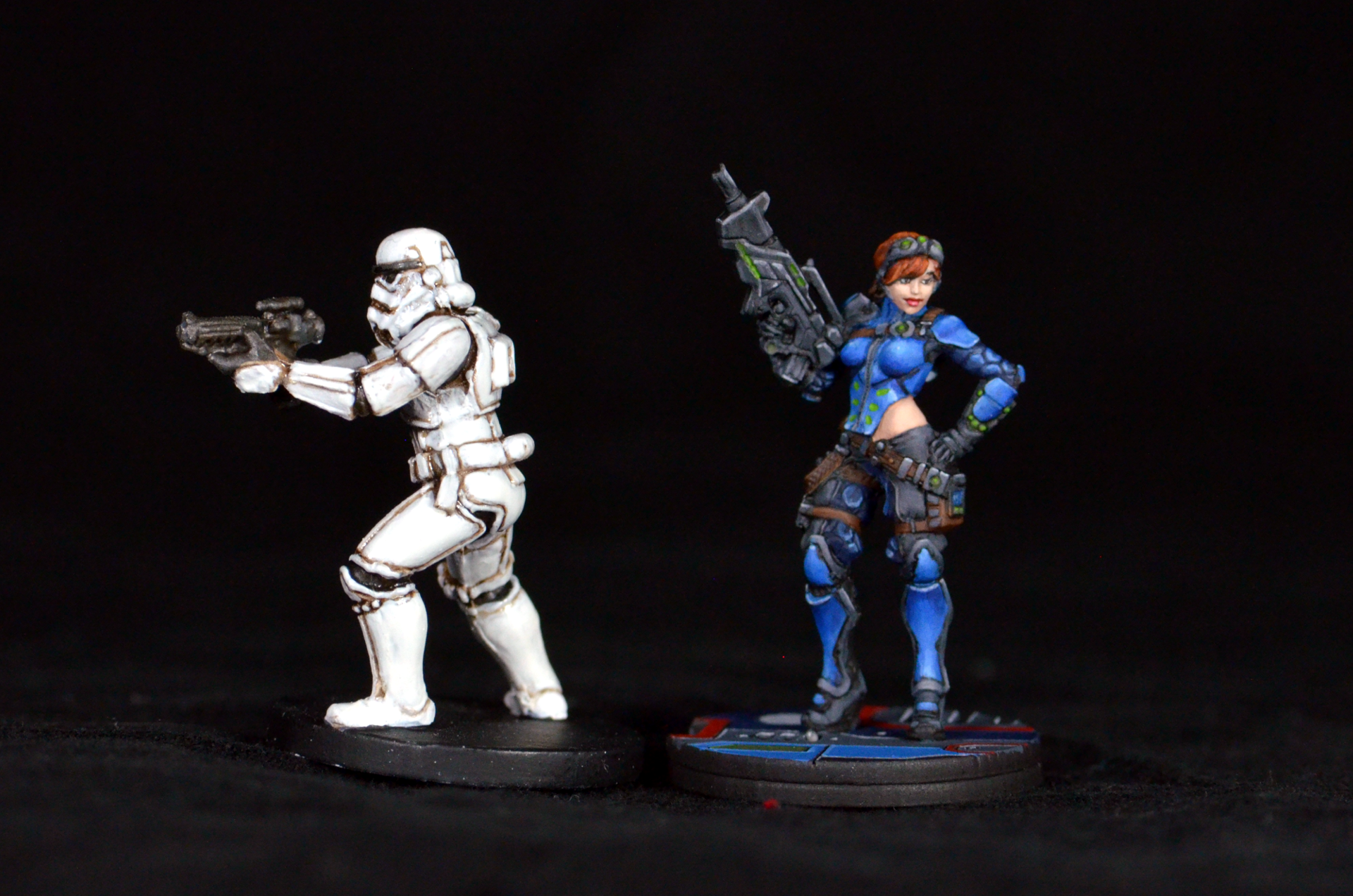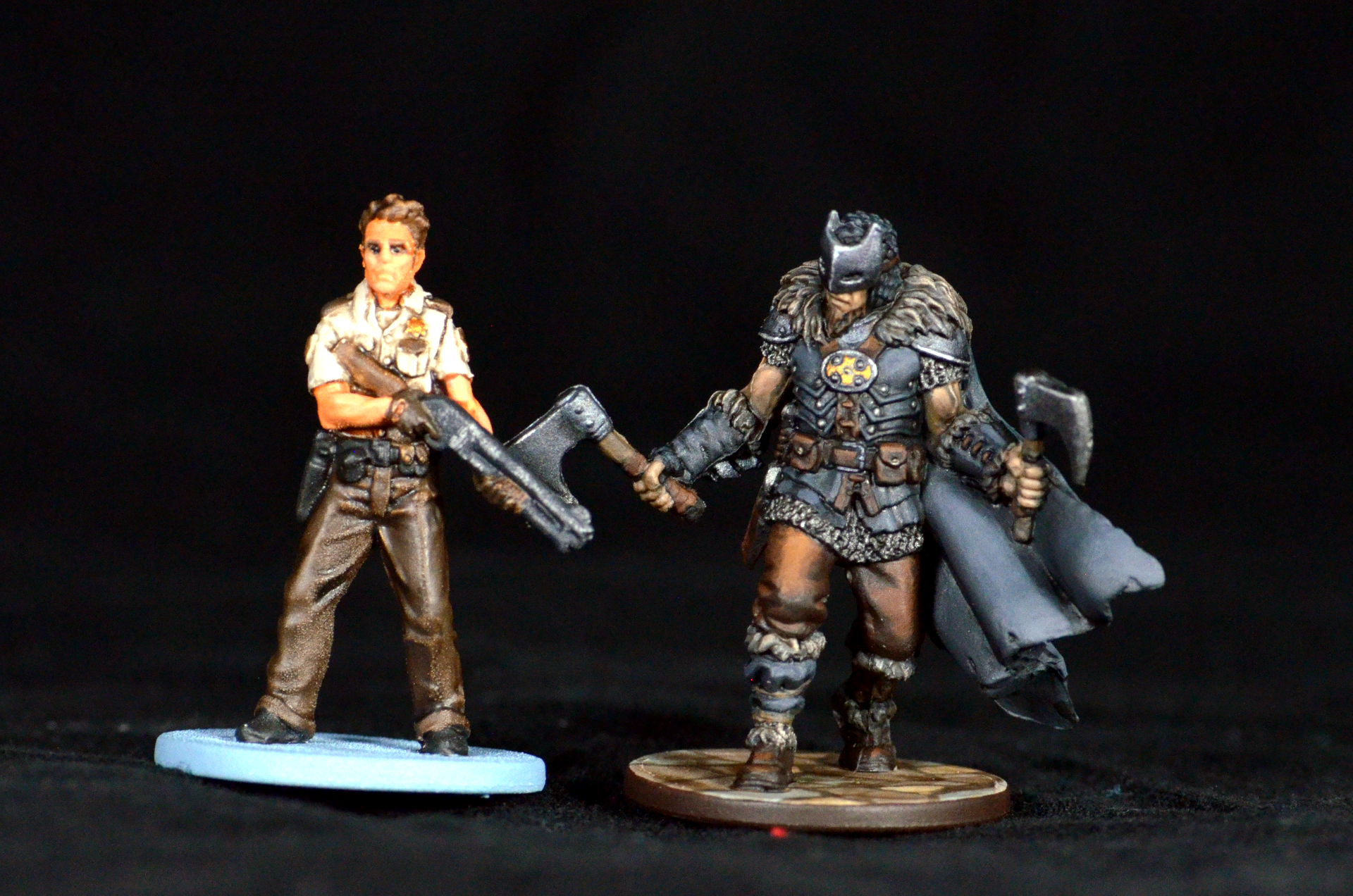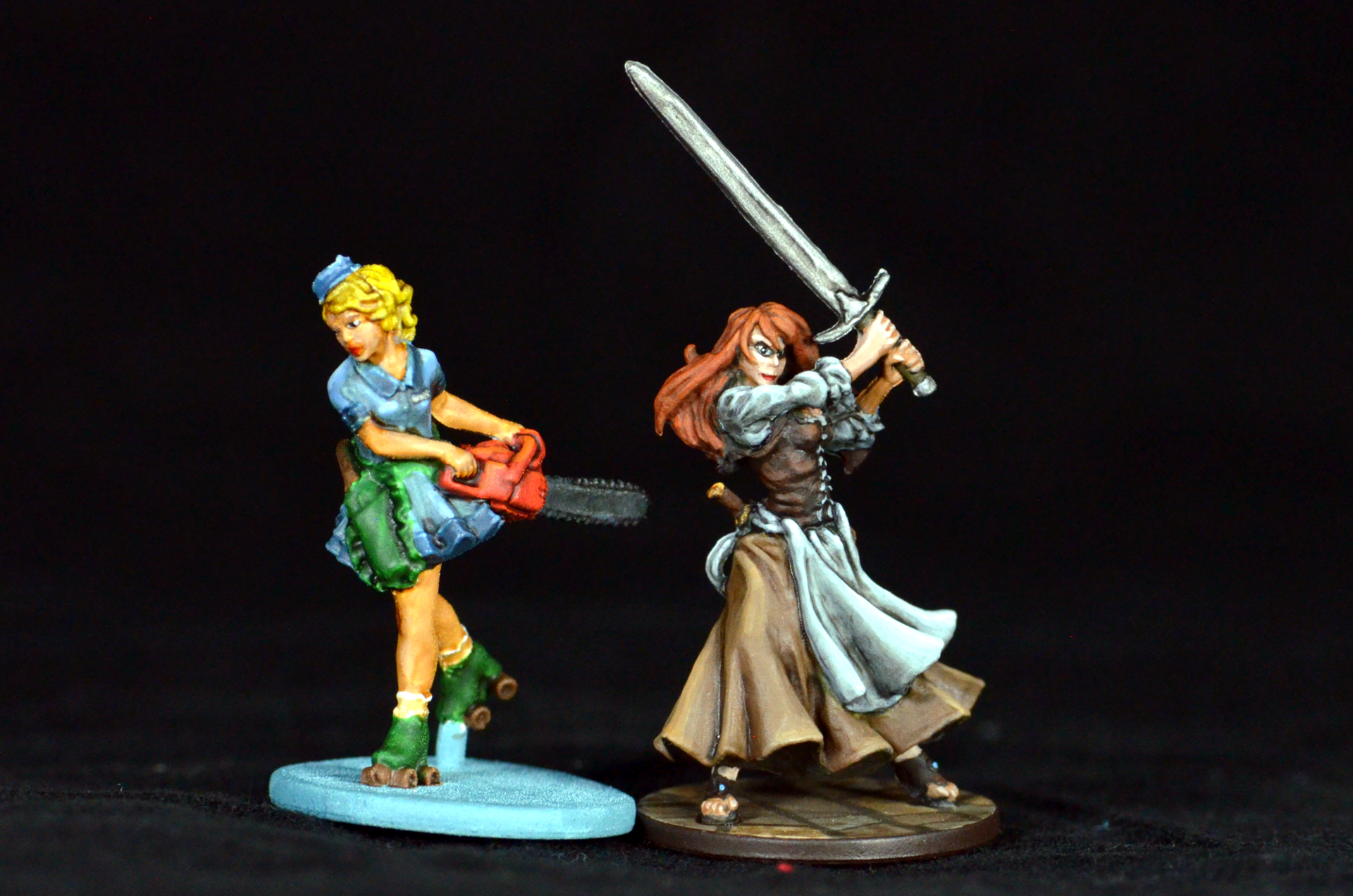The Monthly Best
There's more to miniature painting that simply completing forces.
... Duh.
Sometimes when you get in a groove, you wind up in a rut. That's where I was stuck after painting forty Anglo-Saxon and Viking Warriors in five weeks. Burnout was on the horizon, and the easy way to stop a fire is to stop putting wood into it.
A break was needed. Something different. Something without cloth or chainmail. Science fiction would do the trick, so Drakios and Hector from Infinity were chosen after an intense hunger games competition between toy soldiers. Okay, really just a hunger games for my head, and my heart.
The Tinbot, Hector, and Drakios from the Steel Phalanx of Infinity.
Determined to reverse the burnout from painting that many little soldiers to a low standard, Hector was volunteered as the model to receive the best paint job. The shift from focusing on speed to giving myself as much time as I wanted to finish helped reverse the burnout and motivate me to pick up the brush again. Nearly twelve hours later, triple the average Infinity model paint time, Hector was ready to put his chubby face on display to the world.
Looking down Hector's revolver.
The ultimate intent of doing a model to the best of your ability each month is simple: deliberate practice.
Hector showing off his back side. I think this is the best view of the model, but that has more to do with the color choices that are obvious from this angle. Had I chosen a better color scheme, the model would be much more interesting.
On Hector, the focus was smooth blending and a stronger Zenithal highlight. The result is good, but in the end doesn't quite fit the model. I think he would have turned out more interesting if I had simply done diffuse lighting, making everything pop.
The turn of this post is that even painting models as quickly as possible can be deliberate practice with a little thought applied to the process. For example, these wolf pelts that I recently painted on a few Berserkers.
Saga Berserkers parading their wolf pelts. Thankfully, the animal rights group hasn't found Saga or Vikings yet...
The pelts were an easy combination of dry brushing and applying washes. The focus was painting them quickly, but some before and after thoughts on them, as well as feedback from the experts at my FLGS, help turn it into something more than just painting quickly. Those extra efforts and thoughts are the key to improving.
This post was originally intended to emphasize the value of painting a model a month to the best of your ability. It is a good idea, and will help you improve your painting. Instead, I would rather exalt finding the nuance in all of your painting. It's in this nuance, and the celebration of it, that improvement lies.










